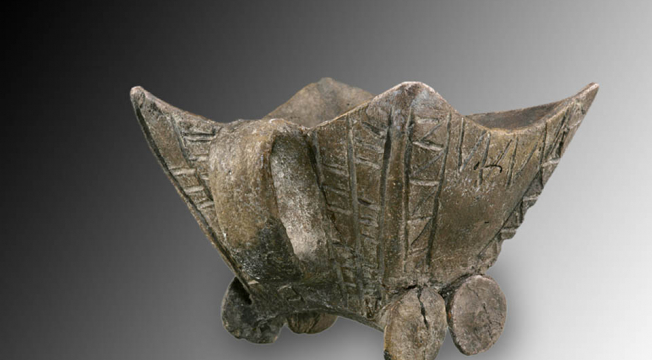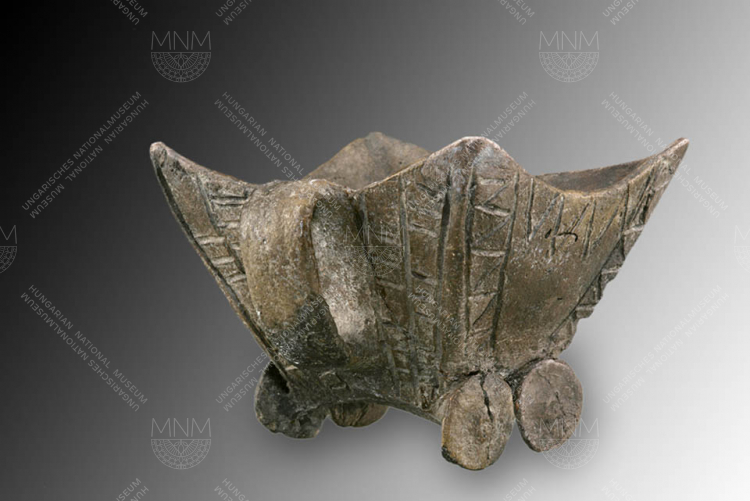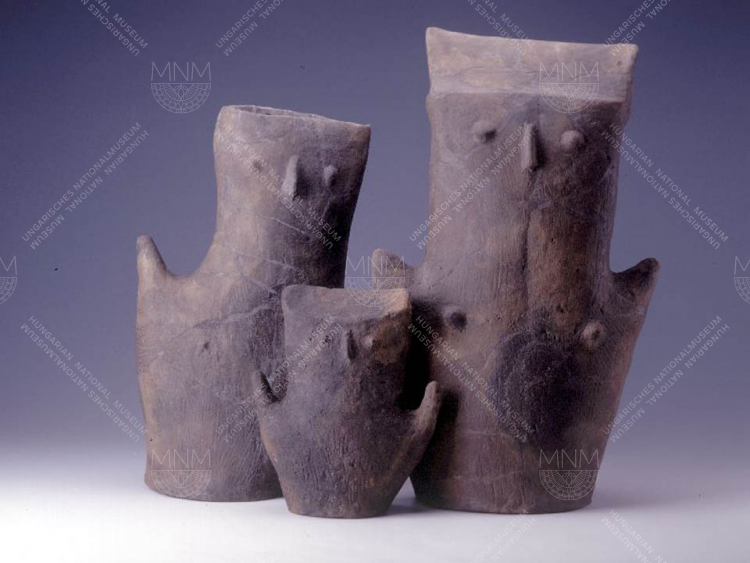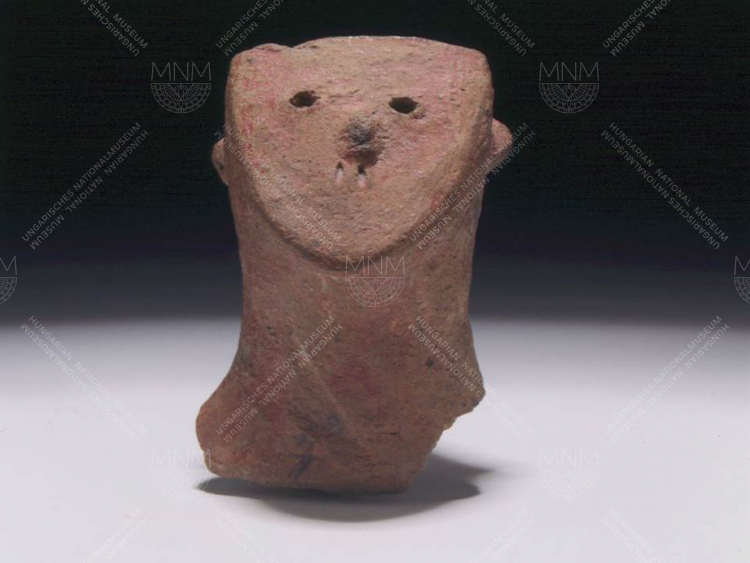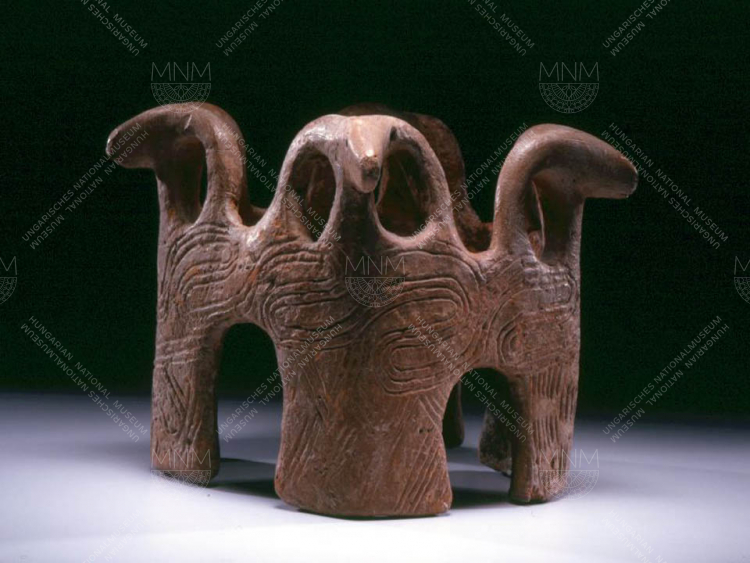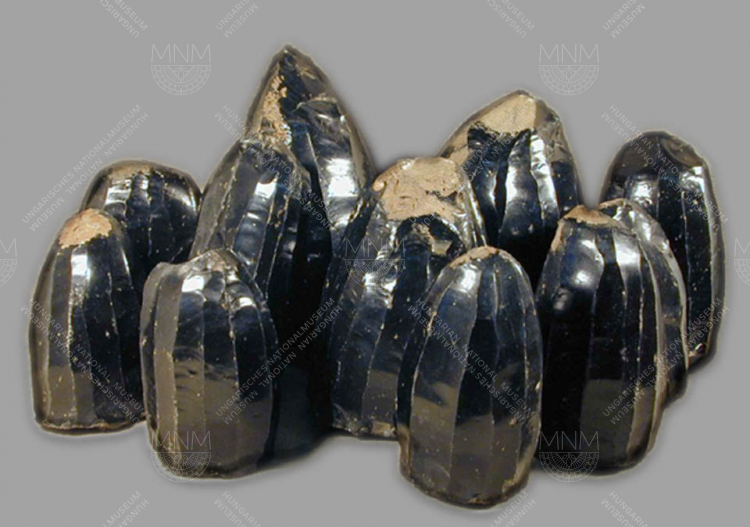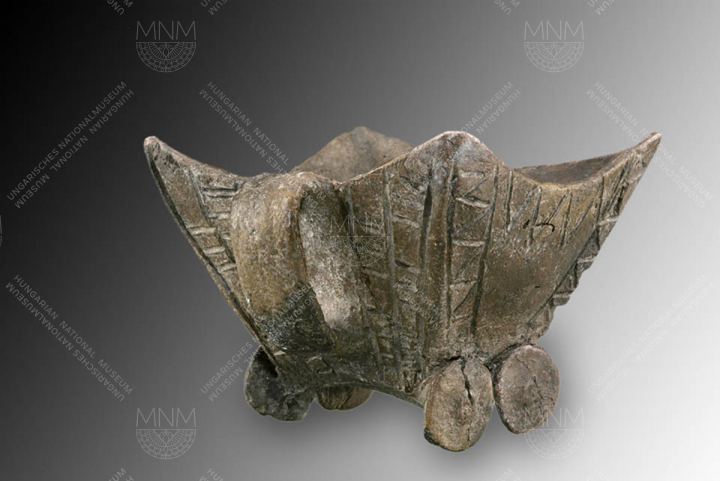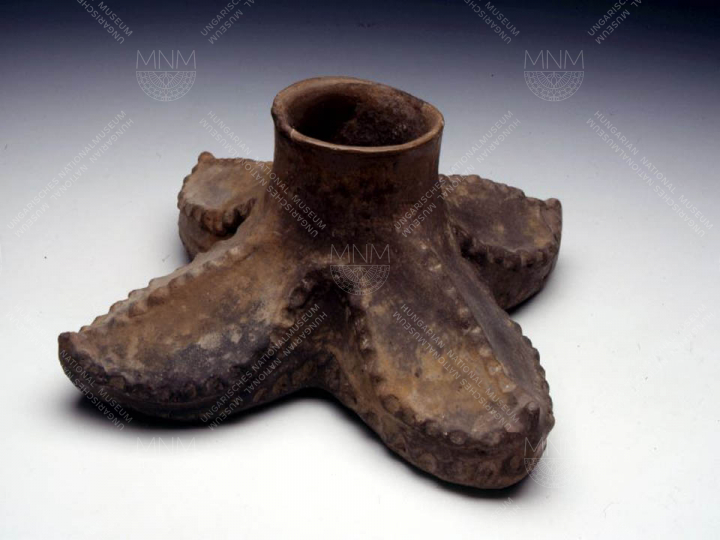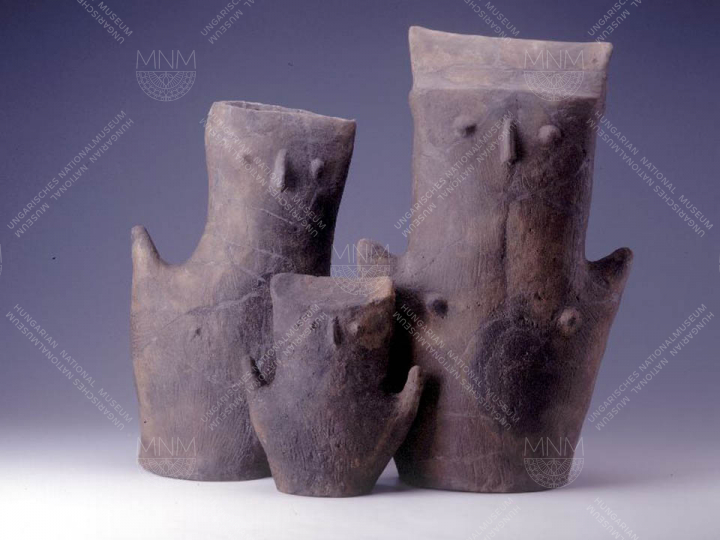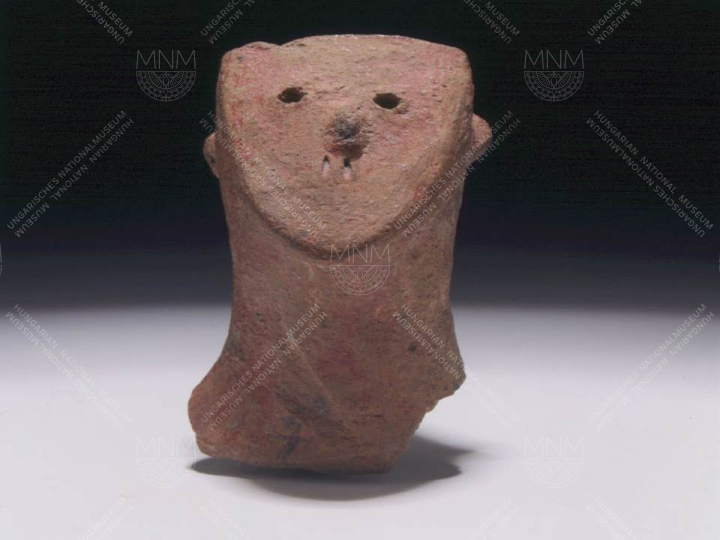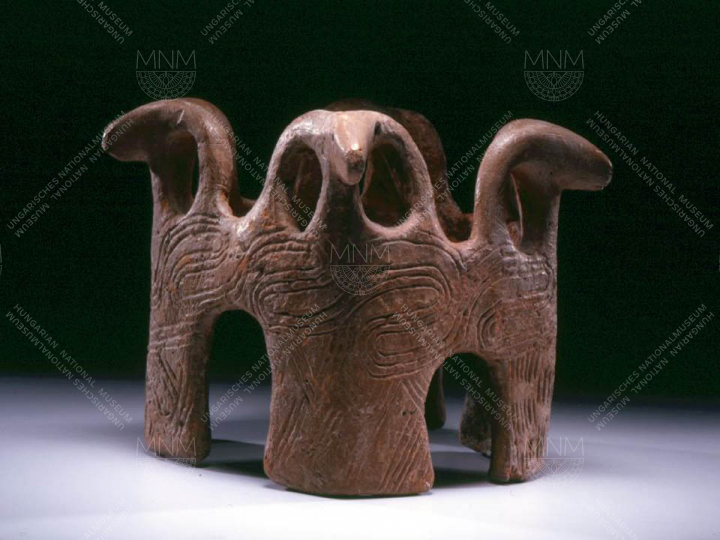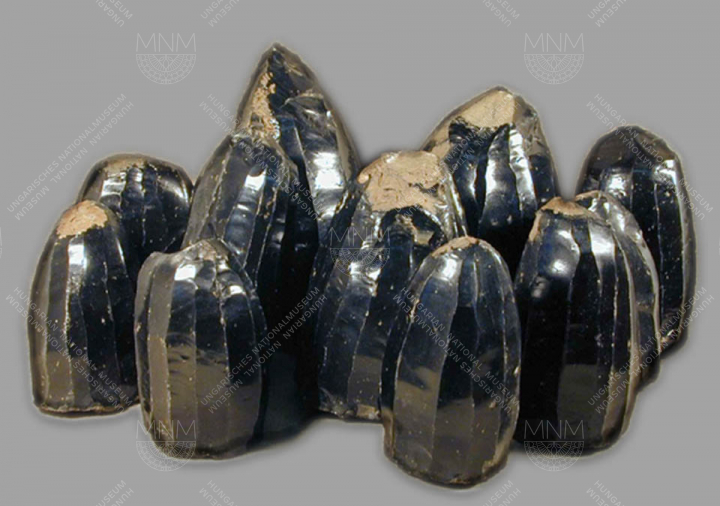
Room 2
During the New Stone Age and the Copper Age (6000–2800 BCE), the basis for subsistence already consisted of productive farming – crops and animal husbandry. People lived in lasting, permanent settlements: in villages or in farmstead-like smaller settlements. Agricultural and household implements of stone, bone, antler, and fired clay have come down to us; artefacts made from other materials can be reconstructed only indirectly. Cemeteries and idols attest to religious beliefs and ideas regarding an afterlife.
By the end of the Copper Age, use of copper and gold had become general. As wealth increased, fortified settlements, too, made their appearance.
INTERESTING FACTS:
The effectiveness of axe heads made from polished stone is comparable to that of today’s metal axe heads. Up to the discovery of metal, such axe heads were indispensable implements; they also had a symbolic role at weddings, burials, and community festivities.
In the New Stone Age, settlement density on the Great Hungarian Plain reached, or even exceeded, today’s level, and the floor area of the dwellings there often significantly exceeded that of the average Hungarian dwelling today.
Visitors can find out which were man’s first crafts by looking into the doorway of a building erected in this exhibition space.







